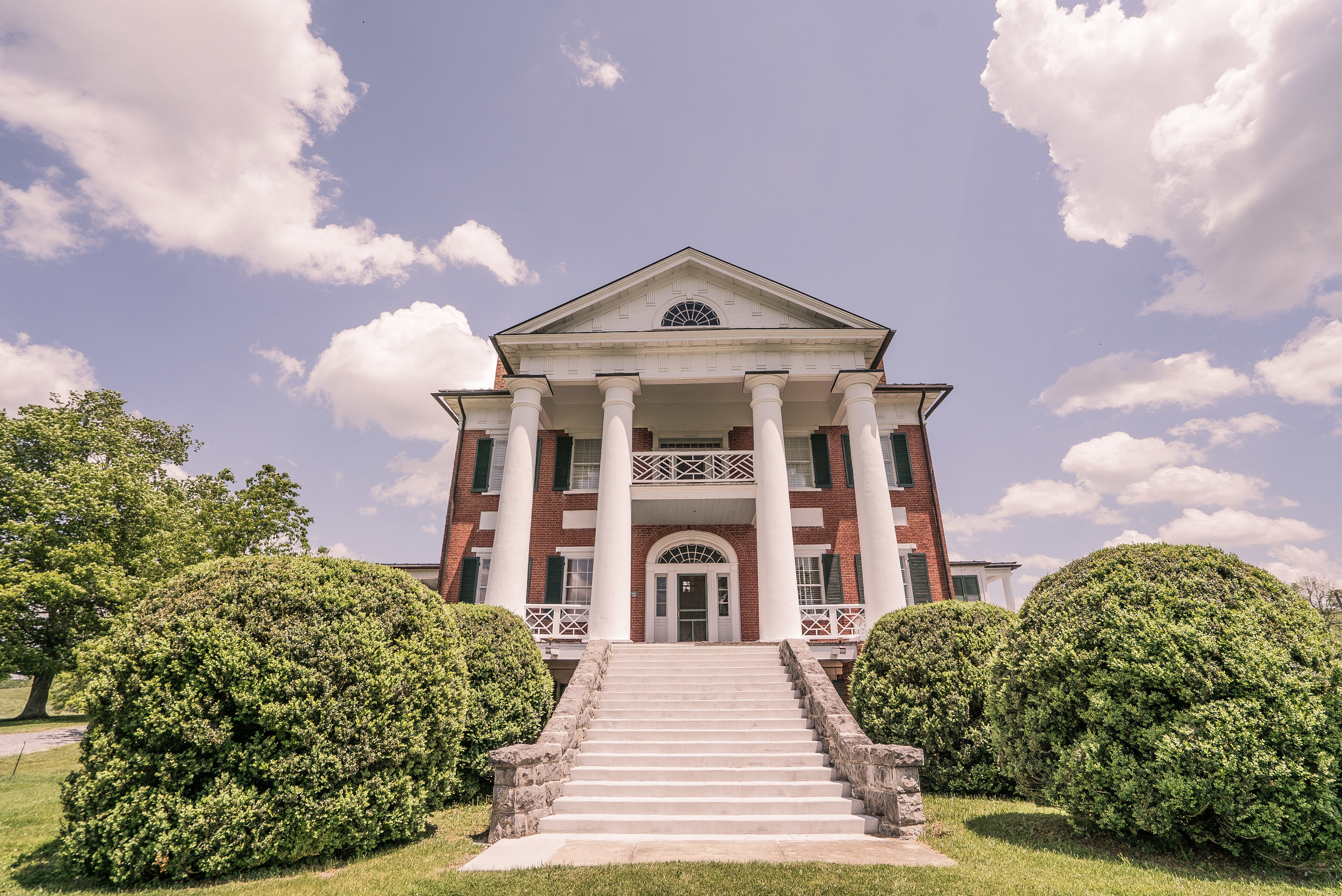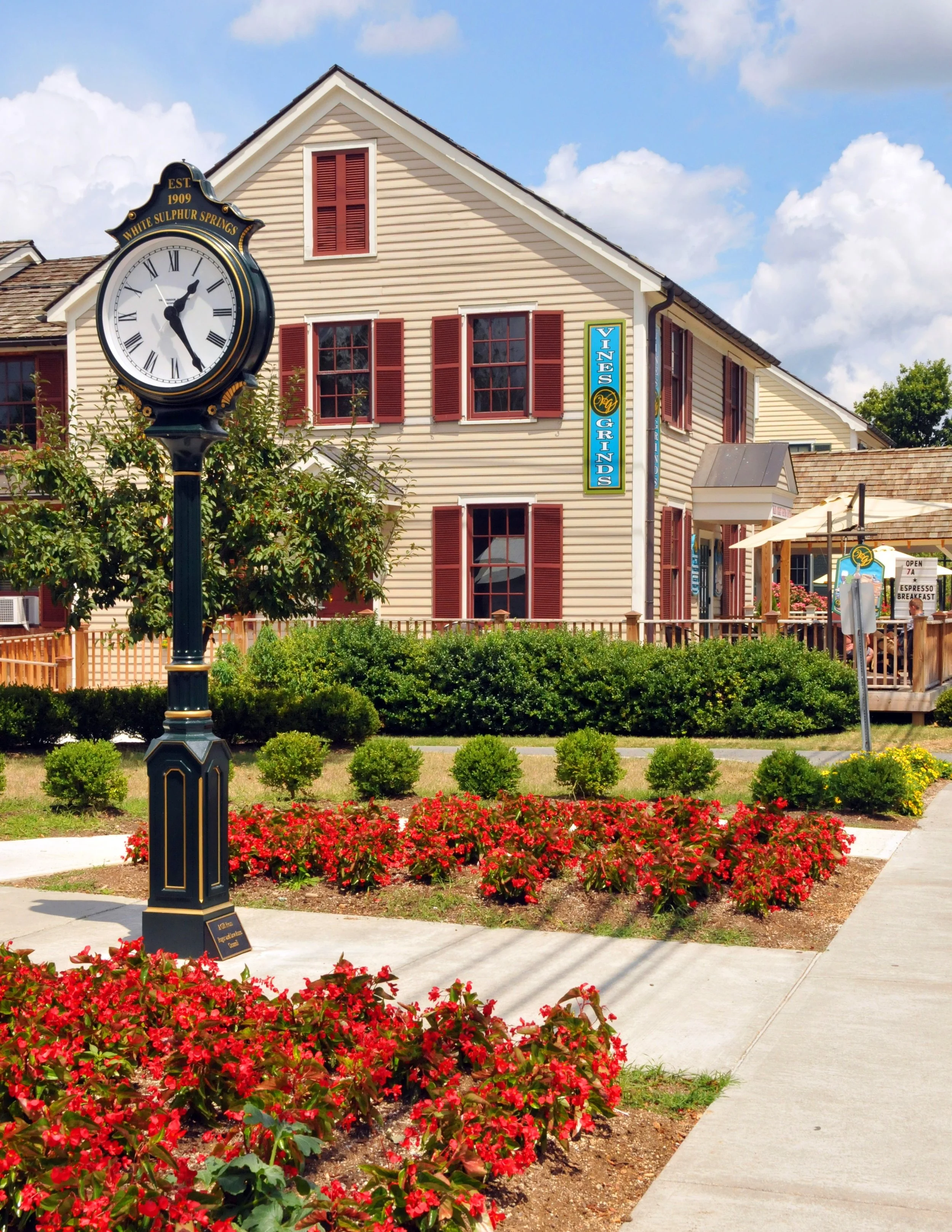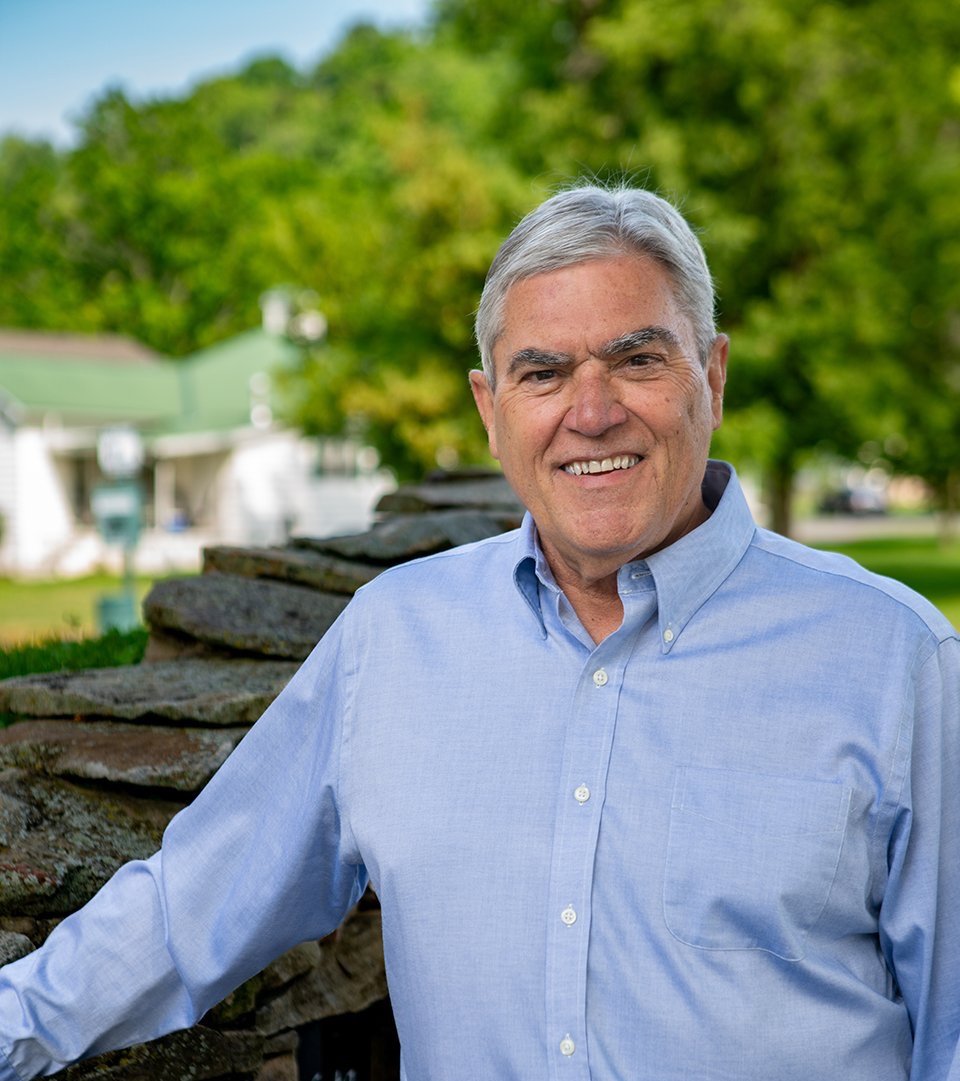Salt Sulphur Springs

By Allison Wickline
Two miles south of Union lies Salt Sulphur Springs—a small, unincorporated community enclosed by majestic mountains. The little valley town has been the location of the Salt Sulphur Springs Resort for more than two centuries. During the resort’s heyday, the spa accommodated such notable guests as 8th President Martin Van Buren, Senator John Calhoun, and Secretary of State Henry Clay. Though the resort no longer operates, many of the original structures still stand and remind visitors of the elegance and grandeur of days gone by. With a history as rich and deep as the waters running beneath it, Salt Sulphur Springs is a West Virginia treasure.
Shortly after the American Revolution, the cash-strapped United States began offering land grants to veterans, as gifts, or to pay off the nation’s looming war debts. Somewhere around 1784, one such gift was given to William Shanks, an uneducated farmer living in Monroe County. Shanks received 595 acres of verdant land lying on both sides of Indian Creek. But for some reason, presumably fear of Indian attack, Shanks and his wife decided to leave the area before developing the property. They sold the land to Ervin Benson, who built a large log house on the property and resided there for many years.
The land took on a whole new value in 1802 when a man named Alexander Hutchison was boring for salt on Indian Creek and found a spring flowing with rich sulfur water. This first spring was named Sweet Sulphur and began attracting guests to the valley. Three years later, Benson discovered the second spring, named Salt Sulphur, by watching where animal herds gathered to drink. The third and final spring was discovered nearby. It was rich in iodine—a rare commodity in the world at that time. Hutchinson aptly named it Iodine Spring. With the springs beginning to draw in visitors for their healing properties, Benson knew that he could help accommodate them. He built a large timber-frame house on the property for guests, added a pavilion with seating, and even enclosed the springs in marble reservoirs.
Described by historian Oren F. Morton as “chalybeate and sweetly sulphurous and containing iodine,” Salt Sulphur Springs’ waters were rich in sulfate, sodium, calcium and bicarbonate. These waters were believed to have curative powers for a number of ailments, ranging from an everyday headache to nerve damage, tuberculosis to depression. Visitors would travel to Salt Sulphur Springs from states away to “take the waters,” as it was often called. They would soak and bathe in the waters, or sometimes even drink the sulfurous tonic.
The combination of the serene valley, the new structures, and the healing mineral water made Salt Sulphur Springs, or “The Salt” resort, a popular destination for locals and visitors alike. Wealthy Southerners, often from Virginia or the Carolinas, were The Salt’s most frequent guests. William Erskine, a member of a prominent family in Monroe and Greenbrier counties, and Isaac Caruthers, a merchant from Lexington, VA, once visited the resort simply for the healing waters but found themselves in love with Benson’s two daughters. Soon after their visit, the two couples were married; Erskine married Peggy Benson, and Caruthers married Jane. The new family members took an immediate interest in the family business and built cabins, a post office and a dry goods store on the site. In 1821, Erskine and Caruthers bought the entire property from the aging Benson.
The new owners decided to expand the property to attract more guests, so they brought in expert carpenters and stonemasons John and Jacob Fullen from Richmond to oversee the construction projects. The 1820s and 1830s brought new cottages, an expansive stone main hotel, a public bathhouse and a bandstand. Guests could then enjoy serenades as they entered the dining hall. The following years saw the building of a race track, a bowling alley, flour mills and the famed Erskine House. This magnificent gray stone building contained 72 rooms, porches adorned by beautiful wooded balustrades and fireplaces in every room. The massive build cost 30,000 dollars—a small fortune at the time. The investment proved temporarily beneficial. The years after the building of the Erskine House were the most profitable in the resort’s history. But the success was not to last—transportation changes and the civil war would pull visitors away from The Salt.
Just before the onset of the Civil War, Erskine and Caruthers died and left the resort ownerless. Records around this time aren’t very clear on the ownership exchanges, but it is believed that Erskine’s wife Margaret ran the resort until the end of the war. Though the war didn’t bring direct damage or destruction to the property, wartime disrupted the lives of The Salt’s staff, making it difficult to maintain the resort’s massive upkeep. Salt Sulphur Springs was also used as a temporary hospital and soldier quarters by both armies for much of the war which took a heavy toll on the structures.
The completion of the C&O Railway in 1873 led to the further decline of Monroe County’s mineral springs industry. The railway bypassed Monroe County and traveled through Greenbrier instead.
The long stagecoach rides to Monroe County facilities put them at a disadvantage when compared to the railroad’s direct access at White Sulphur Springs. Though an alternate route through Sweet Springs Valley and Indian Creek to the New River had been discussed, there was more political and economic clout in Greenbrier to steer the rail lines by way of White Sulphur and Ronceverte instead.
After the war, the property passed through owners and was used for camp meetings and group gatherings. But in 1882, Col. J.W.M. Appleton, a Boston native and Union soldier during the Civil War became manager and set out to restore Salt Sulphur to its former glory. He sought to modernize access and communication to the resort by establishing a telephone line from Salt Sulphur to Union. Appleton later organized a stage line between Salt Sulphur and the railroad stop at Fort Spring. This stage line was intended to attract guests coming in on the Chesapeake and Ohio Railway. Nevertheless, the resort’s vacation trade declined at the turn of the century, and the resort closed again at Appleton’s death in 1913.
P.E. Holz of Charleston launched the last attempt at reviving and reopening the resort in 1922. Holz made improvements to the property and spa, but was thwarted by the Great Depression. It was closed for the final time in 1936. The property changes hands numerous times and was purchased by Dr. Ward Wylie in the 1960s. With an eye for preservation, Wylie turned the stone hotel into a private residence and restored many of the springhouses and cottages on the property. While most of the buildings stand as a testament to the ingenuity and skill of their builders, The Erskine House has deteriorated rapidly. In 1985, the entire resort was added to the National Register of Historic Places—a designated that will help preserve the site for future generations. Dr. and Mrs. Wylie’s daughter Betty Farmer currently owns the property and uses it as a private residence. In keeping with the spirit of The Salt, she often rents the grounds and buildings for weddings or special events.




